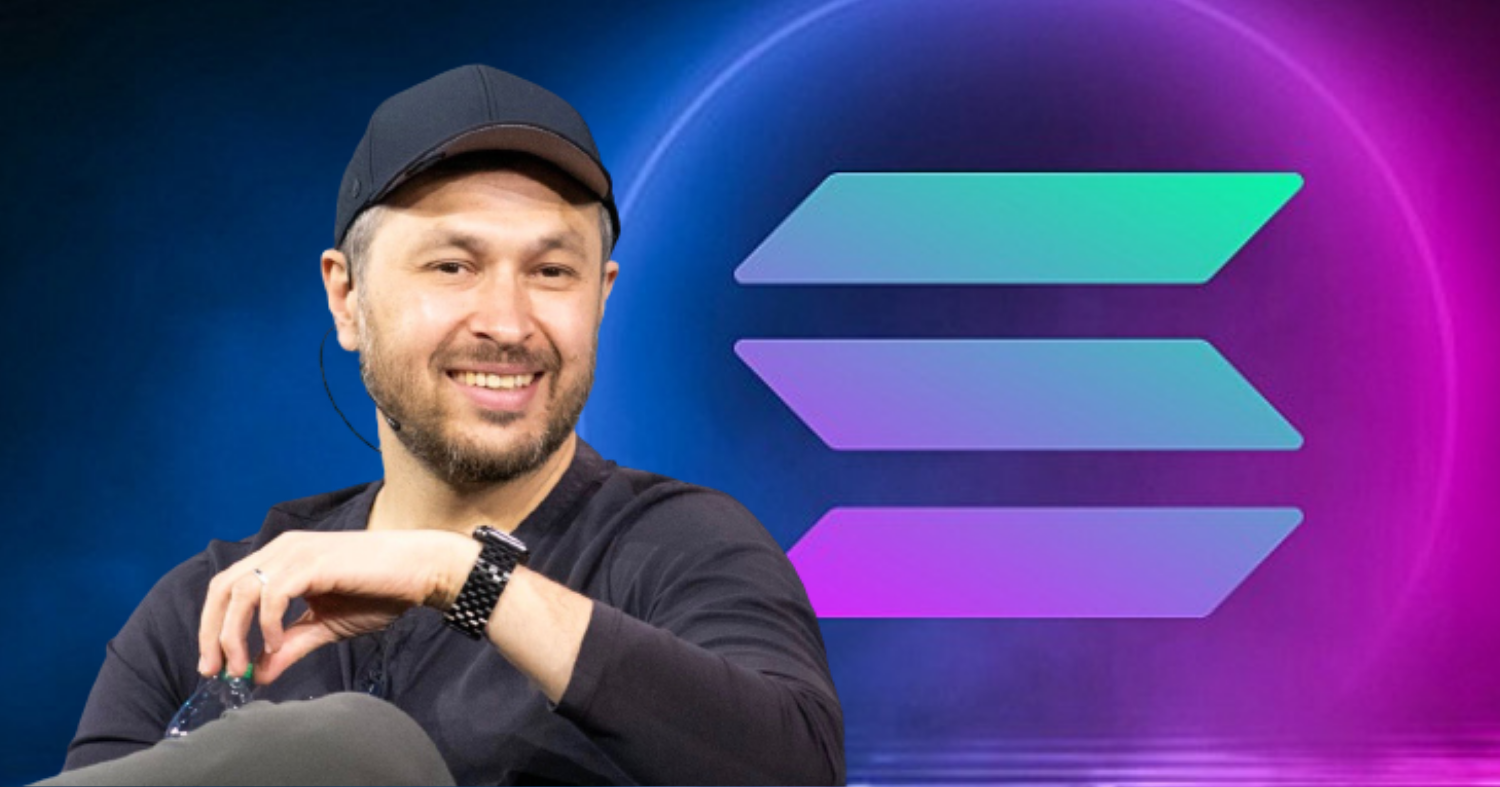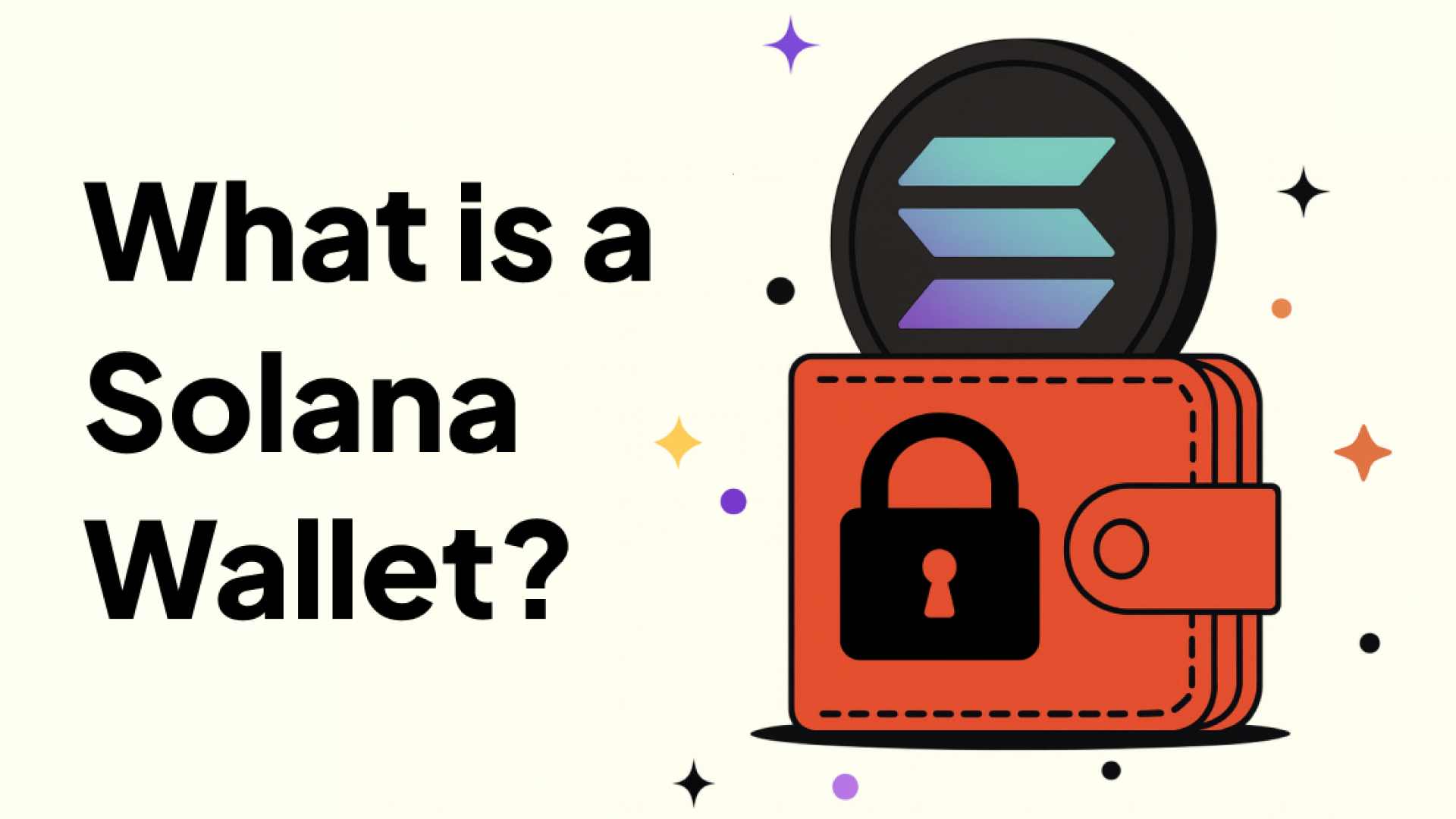Who Made Solana? The Founders and Story Behind the Blockchain
Solana is a high-performance blockchain built for speed, low fees, and global-scale applications. Designed to support up to 65,000 transactions per second, with fees often just fractions of a cent, it has become a top choice for decentralized finance (DeFi), NFTs, and Web3 projects.
But Solana isn’t just about technology, it’s about the people who built it. In 2017, a small team of engineers set out to solve blockchain’s toughest challenge: scalability. Their work gave rise to one of the fastest-growing ecosystems in crypto.
Key Takeaways
- Origins: Solana began in 2017, created by Anatoly Yakovenko, with Raj Gokal and Greg Fitzgerald joining as co-founders.
- Launch: The blockchain’s mainnet beta launched in March 2020, under Solana Labs and the Solana Foundation.
- Strengths: Designed to support up to 65,000 transactions per second, with fees often just fractions of a cent.
- Challenges: Network outages and the 2022 FTX collapse tested the ecosystem, but Solana proved resilient.
- Future: With growth in mobile, DeFi, NFTs, and gaming, Solana aims to remain a leading blockchain platform.
Who Made Solana?
Solana was created by Anatoly Yakovenko in 2017, with Raj Gokal and Greg Fitzgerald later joining as co-founders. Together, they built Solana Labs, the company behind the blockchain’s early development.
Yakovenko provided the technical vision with his concept of Proof of History, while Fitzgerald helped translate that vision into code. Gokal focused on the business and ecosystem side, ensuring the project reached developers and investors.
The blockchain officially launched in March 2020 under the guidance of both Solana Labs and the Solana Foundation, marking the start of Solana’s journey as a high-speed, low-cost network for decentralized applications.
Meet the Founder – Anatoly Yakovenko
Anatoly Yakovenko is the visionary who first imagined Solana, drawing on years of experience in high-performance systems.
- Early career at Qualcomm: Yakovenko spent over a decade at Qualcomm, working on distributed systems and networking technologies. These years gave him deep knowledge of how to design systems that process massive amounts of data quickly and reliably.
- The spark of an idea: In 2017, he published a whitepaper introducing Proof of History (PoH). This concept, a cryptographic clock that timestamps transactions, aimed to remove one of blockchain’s biggest bottlenecks: waiting for nodes to agree on time and order.
- A bold vision: His goal was not modest. Yakovenko wanted a blockchain that could match the speed of the internet, scaling to tens of thousands of transactions per second without sacrificing security or decentralization.
- From concept to reality: With PoH as the foundation, Solana became a reality. What started as a paper soon evolved into one of the fastest and most cost-efficient blockchains in the world.

Other Solana Co-Founders
Raj Gokal - Business Strategist and Ecosystem Builder
Raj Gokal joined Solana early on and became the bridge between the technical vision and the wider world.
- From venture capital to crypto: Before Solana, Gokal worked in venture capital and product strategy, focusing on startups in health and technology. This gave him insight into how to grow companies and ecosystems.
- Shaping the ecosystem: At Solana, he took charge of business development, fundraising, and building partnerships. His work helped connect the project with developers, investors, and communities.
- Driving adoption: While Yakovenko focused on engineering, Gokal’s efforts made Solana accessible to the broader market, fueling its rapid adoption.
Greg Fitzgerald – Engineer Behind the Early Solana Code
Greg Fitzgerald was one of the first engineers to join Yakovenko, helping turn bold ideas into working code.
- Engineering roots: Like Yakovenko, Fitzgerald came from Qualcomm, where he built expertise in complex systems.
- Building the codebase: He wrote much of Solana’s early implementation in Rust, a programming language known for speed and safety.
- Foundation for growth: Fitzgerald’s contributions provided the technical backbone that allowed Solana to scale into one of the fastest blockchains in existence.

When Was Solana Created? A Brief History of Solana
The idea for Solana began in 2017, when Anatoly Yakovenko published his whitepaper introducing Proof of History. From there, the project quickly took shape:
- 2017: Proof of History concept published.
- 2018: Solana Labs founded in San Francisco, bringing together the founding team.
- 2019: Testnet launches, giving developers the first chance to experiment with Solana’s high-speed design.
- March 2020: The mainnet beta officially goes live, marking Solana’s public debut as a functioning blockchain.
Since that launch, Solana has grown into one of the most widely used platforms for DeFi, NFTs, and Web3 applications.
Why Was Solana Invented?
When Solana was first imagined, the blockchain industry faced a clear problem: speed and scalability.
- Limitations of early blockchains: Bitcoin processed only about 7 transactions per second (TPS), while Ethereum averaged around 15–30 TPS. As demand grew, both networks became slow and expensive to use.
- The challenge: Developers were asking, how can blockchains scale to handle millions of users without losing security or decentralization?
- Solana’s solution: Yakovenko’s idea of Proof of History (PoH), combined with Proof of Stake, allowed Solana to order and verify transactions far more efficiently.
- The result: A blockchain designed to support up to 65,000 transactions per second with fees typically under $0.01, making it one of the fastest and cheapest platforms for decentralized apps.
Solana was invented with one clear mission: to bring blockchain performance closer to the speed of the internet, opening the door to mainstream adoption.
Who Owns or Controls Solana Today?
Unlike a traditional company, Solana isn’t owned by a single person or group. Its structure combines both organizational support and community governance:
- Solana Labs: The development company that created the blockchain and continues to build core technology.
- Solana Foundation: A non-profit based in Switzerland that supports decentralization, ecosystem growth, and community initiatives.
- Validators: Independent operators who run nodes, secure the network, and process transactions.
- SOL token holders: By staking their tokens, holders help secure the blockchain and, in some cases, participate in governance decisions.
This mix of companies, a foundation, and community validators ensures Solana has direction while remaining decentralized in its operations.
The History of Solana: Key Milestones in Its Development
The journey of Solana spans from a whitepaper idea to one of the most widely used blockchains. Here are the major milestones:
- 2017: Anatoly Yakovenko publishes the Proof of History whitepaper.
- 2018: Solana Labs is founded in San Francisco, assembling the core founding team.
- 2019: Public testnet launches, showcasing Solana’s high-speed performance.
- March 2020: Mainnet beta officially goes live, marking Solana’s entry into the blockchain ecosystem.
- 2021: Solana surges in adoption during the DeFi and NFT boom, with projects like Serum, Raydium, and Solanart gaining traction.
- 2022: The FTX collapse hit Solana’s ecosystem hard due to close ties, but the network proved resilient and continued to grow afterward.
- 2023–2025: Expands into mobile crypto (Solana Saga phone), payments, gaming, and Web3 infrastructure.
This timeline shows how quickly Solana evolved from a concept in 2017 to a top blockchain platform used worldwide.
Challenges in Solana’s History
While Solana has grown rapidly, its journey hasn’t been without setbacks. A few key challenges stand out:
- Network outages: In 2021 and 2022, Solana suffered multiple outages caused by bugs and overwhelming transaction spikes. These incidents raised questions about stability, though improvements have since reduced downtime.
- FTX collapse: Solana was closely tied to FTX and Alameda Research, both major backers of the ecosystem. When FTX collapsed in late 2022, the price of SOL and confidence in the network were hit hard. Despite this, Solana’s developer community remained active, and adoption continued.
- Competition from Ethereum and others: With Ethereum scaling through layer-2 solutions and other blockchains like Avalanche and Aptos emerging, Solana faces ongoing pressure to differentiate itself.
These challenges highlight that Solana’s rise hasn’t been smooth, but they also show the project’s resilience. Each setback has pushed the network to improve and strengthen its ecosystem.
The Future of Solana
The story of Solana doesn’t end with its launch, the blockchain continues to evolve. Looking ahead, several developments are shaping its future:
- Mobile-first crypto: With the release of the Solana Saga phone, the project is pushing Web3 into mobile devices, making crypto apps more accessible to everyday users.
- Expanding DeFi and NFTs: Solana remains a top choice for decentralized finance protocols and NFT marketplaces, offering low fees and fast performance that attract both developers and traders.
- Payments and adoption: With near-instant transactions at minimal cost, Solana is well-positioned to power real-world payments and microtransactions.
- Ecosystem growth: Backed by the Solana Foundation and a growing community of developers, new projects in gaming, infrastructure, and social apps continue to launch on Solana.
While challenges like network stability and competition remain, Solana’s focus on speed, affordability, and accessibility suggests it will remain a major player in the blockchain space.
Final Thoughts
So, who made Solana? The blockchain was created by Anatoly Yakovenko in 2017, with Raj Gokal and Greg Fitzgerald as co-founders. Together, they built one of the fastest blockchains in the world, designed to make crypto usable for millions of people.
From its roots at Qualcomm to becoming a top-10 blockchain, Solana’s story reflects the vision of engineers who wanted to solve blockchain’s biggest problems and succeeded.
As Solana continues to grow in DeFi, NFTs, and mobile adoption, its founders’ legacy is shaping the future of decentralized technology.
Explore the Solana ecosystem today with Backpack. You can create a Solana wallet like Backpack Solana wallet to store SOL and NFTs, trade SOL directly on Backpack Exchange, and even earn yield on your SOL, all in one secure, user-friendly platform. Before you start, check the live Solana price on Backpack Exchange to stay updated on market trends and plan your trades confidently.




